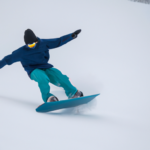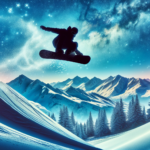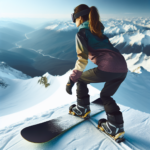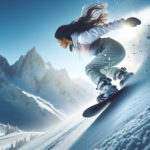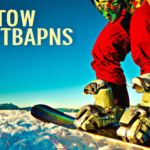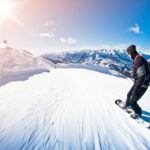Are you passionate about snowboarding but feel like you’ve hit a plateau? Do you sense there’s room for improvement but don’t quite know how to go about it? Look no further. This comprehensive guide, “How To Improve At Snowboarding,” is just the resource you need. From perfecting balance and control to practicing new tricks and techniques, this article carefully breaks down actionable steps that will assist you in enhancing your skills on the slope. It’s time to love snowboarding even more while becoming a more proficient rider. Enjoy the ride!
Understanding the Basics of Snowboarding
Before you can improve at snowboarding, it’s essential to understand the basics. Knowing your way around the sport makes it easier to assess your progress and pinpoint areas you need to work on.
Learning about Different Snowboarding Styles
There’s more than one way to ride the snow-capped mountains, and understanding various snowboarding styles will help you identify which one suits you best. The main styles include freestyle (tricks and jumps), freeriding (riding for pure enjoyment), alpine (high-speed carving and turns), and backcountry (wild, ungroomed terrain). Each style has its demands and charisma.
Common Snowboarding Terminology
It’s not just enough to ride; understanding the lingo used in snowboarding also plays an essential part. Terms like carving (making clean turns), buttering (applying pressure to the board’s nose or tail), or goofy (right foot leading) are commonly thrown around in the sport, and knowing them could significantly improve your learning experience.
Understanding the Equipment
Your gear is your best friend on the slopes. Familiarizing yourself with terms like camber (upward curve of the board), flex (the stiffness of the board), bindings (which secure your feet on the board), and the various types of boots will provide you with valuable insight into how each component impacts your snowboarding experience.
Basics of Snowboarding Safety Precautions
Safety is paramount in snowboarding. Understanding how to protect yourself when riding, such as always wearing a helmet, using wrist guards, following marked trails, and never snowboarding alone, can significantly reduce the risk of injury.
Choosing the Right Gear
Selecting the right snowboarding equipment can dramatically impact your comfort, safety, and learning progress.
Selecting the Appropriate Snowboarding Board
Your snowboarding style will largely determine the type of board you choose. If you’re a beginner, a board with a softer flex is more forgiving and easier to control.
How to Choose the Right Boots and Binding
Comfortable boots that fit well are a must in snowboarding, as they can make or break your day on the slopes. Bindings, on the other hand, should fit your boot size and offer the type of control you need for your preferred style.
Importance of Suitable Clothing
Invest in clothing that keeps you warm, dry, and allows easy movement. Thermal base layers, waterproof outer layers, and breathable fabrics are ideal. Don’t forget your protective eyewear, gloves, and sock.
Protection and Safety Gear for Snowboarding
Protective gear such as helmets, goggles, wrist guards, knee pads, and back protectors can save you from severe injuries. Safety should always be your number one priority, no matter how experienced you are.
Mastering Snowboarding Techniques
Mastering key techniques will significantly improve your snowboarding skills.
Improving Snowboarding Stance
Your stance on the board affects your balance and control. Ensure both feet are shoulder-width apart, your front knee slightly bent, and body weight centered.
Enhancing Weight Distribution
Correct weight distribution helps with better control and turn execution, where your weight should shift towards your front leg when initiating a turn, then gradually to the back leg as you steer.
Perfecting the Carving Technique
Carving involves riding on the edge of your board to make clean, sharp turns. It’s a foundational skill that requires practice to perfect.
Practicing Turns and Jumps
Mastering turns and jumps take time. Start with simple turns and small jumps, gradually increasing the difficulty level as you gain confidence and control.
Building Strength and Stamina
Snowboarding is a physically demanding sport. Building your strength and stamina can significantly improve your performance.
Fitness Exercises for Snowboarding
Exercises that target your core, legs, and balance, like squats, lunges, and planks, can be invaluable for snowboarding.
Benefits of Cardio Workouts
Cardio workouts can enhance your stamina, meaning you can snowboard for longer periods without becoming fatigued. Running, cycling, and swimming are great cardio exercises.
Importance of Strength Training
Strength training, particularly for your lower body and core, can improve your control over the snowboard and boost your overall performance.
Why Stretching Matters in Snowboarding
Regular stretching can increase your flexibility, reduce muscle soreness, and decrease the risk of injury.
Understanding Mountain Conditions
Mountain conditions dramatically impact the snowboarding experience. Being aware of these conditions can help you plan a safer ride.
How Weather Impacts Snowboarding
Weather conditions dictate the quality and type of snow. Understanding how different weather conditions affect snowboarding can enhance your ride and safety.
Identifying Different Types of Snow
From powdery snow to icy patches, the type of snow can change how your board reacts.
Planning a Ride According to Weather
Check the weather forecast before your ride. It’ll help you pick the right gear and plan your course.
Mountain Safety Guidelines
Always respect the mountain safety guidelines. They are there to protect you and your fellow snowboarders from potential dangers.
Learning from the Experts
Taking tips from those who’ve mastered the sport can fast track your snowboarding skills.
Benefits of Snowboarding Classes
Snowboarding classes can provide structured learning and immediate feedback, helping you progress quicker.
Finding a Snowboarding Mentor
A mentor can guide your progress, correct your mistakes, and provide you with insider tips and tricks.
Watching Professional Snowboarding
Observing professionals can inspire your own progress. You can learn new techniques and glean insights into their strategies.
Participating in Snowboarding Clinics and Camps
These events offer intensive, focused learning experiences that could dramatically improve your snowboarding skills.
Optimizing Snowboarding Sessions
Breaking up your sessions and taking care of your body can lead to more effective learning and faster progress.
Planning Sufficient Rest Between Sessions
Rest is crucial for muscle recovery and injury prevention. Make sure to take breaks between sessions.
Hydration and Nutrition for Snowboarding
Stay hydrated and eat nutritious food to keep your energy levels high throughout your snowboarding sessions.
Reflecting on Each Snowboarding Session
Reflecting on what went well and what didn’t after every session can highlight areas for improvement.
Utilizing Off-Season for Practice
The off-season is the perfect time to build up your strength, improve balance, and focus on stretching and recovery.
Going Beyond Comfort Zone
Pushing your boundaries is key to progressing in snowboarding.
Overcoming Fear in Snowboarding
Fear can hold you back in snowboarding. Incrementally confronting your fears can help build your confidence.
Tackling Advanced Slopes
As your skills improve, don’t shy away from experimenting with more challenging slopes.
Learning New Tricks
Always be open to learning new tricks. This enhances your skill set and keeps the sport interesting.
Participating in Competitions
Competing can test your skills under pressure and can be a great way to learn and grow.
Handling Snowboarding Injuries
Injuries can sour your snowboarding experience. Knowing how to handle them can speed up recovery and get you back on the board quicker.
Common Snowboarding Injuries and Prevention
Injuries to the wrist, head, and ankles are common in snowboarding. Proper protective gear and a good understanding of preventatives measures can minimize these risks.
Importance of Seeking Medical Help
If you’re injured, always seek professional medical help rather than trying to deal with it yourself.
Rest and Recovery in Snowboarding
Rest allows your body to recover and should be an integral part of every snowboarder’s routine.
Return to Snowboarding after Injury
Once healed, returning to snowboarding should be gradual to avoid reinjury.
Keeping up with Snowboarding Trends
Staying updated on the latest trends can add an exciting facet to your snowboarding experience.
Current Trends in Snowboarding
Observing and adapting to current trends, like tricks, riding styles, or equipment, can lead to a renewed passion for the sport.
Impact of Snowboarding Technology
Technology has revolutionized snowboarding gear. Following these advancements can help you maximize the benefits they offer.
Influence of Professional Snowboarders
Professional snowboarders often lead the charge in setting trends. Following your favorites can give you insights and inspire your style.
Evolution of Snowboarding Styles
Snowboarding is a dynamic sport. By staying open to the evolution of different styles, you ensure your experience of the sport continues to evolve and stay fulfilling.
- What Snowboard Bindings Should I Get? - January 23, 2024
- What Size Screws For Snowboard Bindings? - January 23, 2024
- How To Snowmobile On Water? - January 23, 2024

